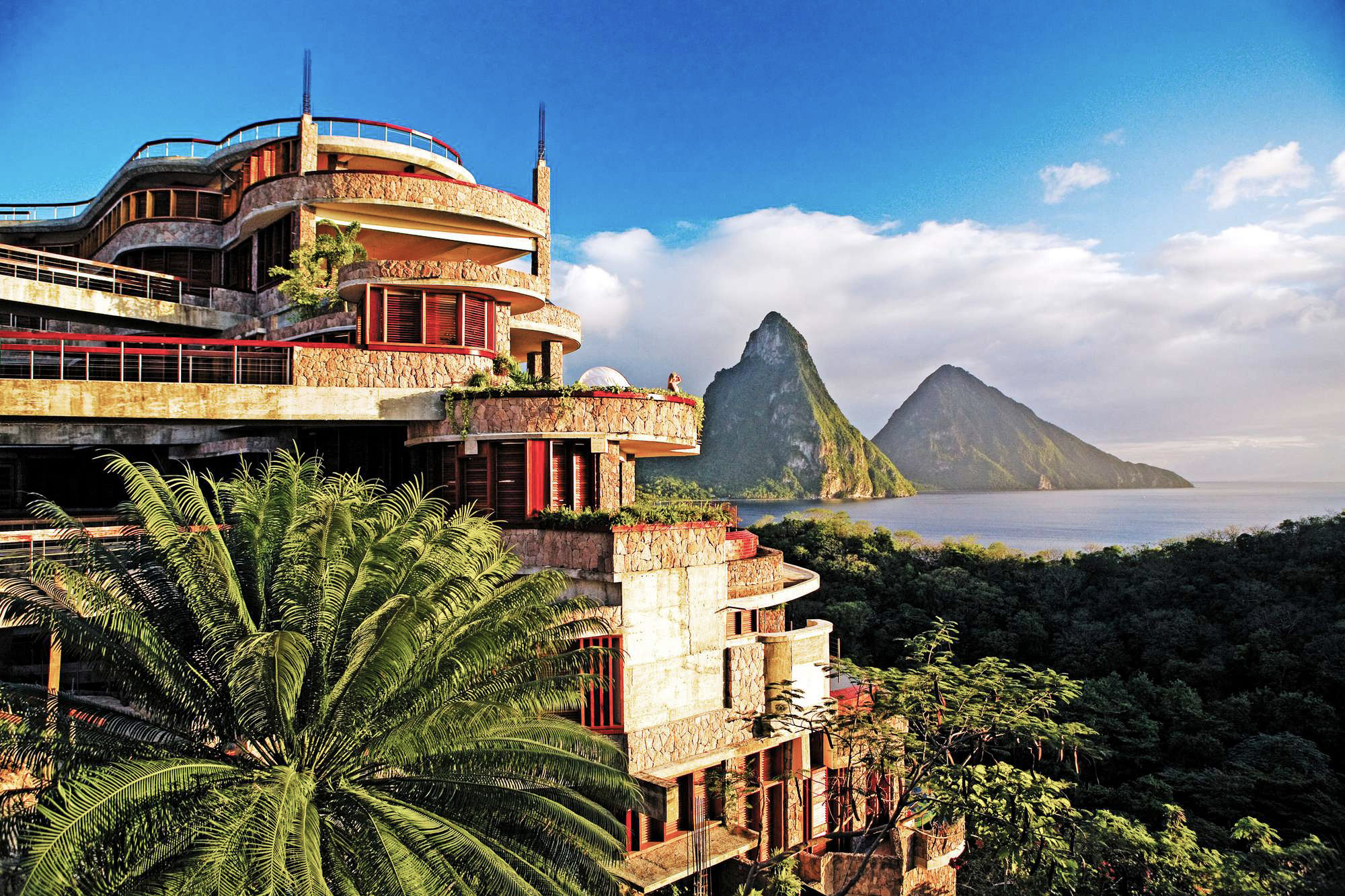It’s time to examine how we travel if we want to save the world (and ourselves). At least, that’s what the environmentalists say when they talk about sustainable travel. And they’re right. Ponder this: one flight from Amsterdam to New York is the equivalent of 866 10-minute showers where carbon footprint is concerned. If you shower once a day, that’s about two years worth of showering!
Some have gone as far as to “shame” people who fly. But travel is one of the many pleasures of life and as with so many other things, it’s not a black or white situation, but rather one where we should examine not whether we should, or shouldn’t, but how we should travel. There are ways to minimize your carbon footprint by a mile ranging from what airline you fly with, to what suitcase you pack in. So let’s have a look at our options, shall we?
Where You Stay
Firstly, if you’re dedicated to sustainable travel, you should take into account where you stay. Is the hotel carbon neutral? Or has it at the very least taken measures to be as environmentally friendly as possible? While offsetting their carbon footprint by planting trees may help, they should also have an eco-friendly policy in place. This can mean anything from getting rid of plastic straws and paper napkins, to encouraging hotel guests to avoid washing towels too often and turning off the lights and air-conditioning when leaving their room. Below you’ll find some hotels and resorts that have a sometimes innovative and always helpful approach to reducing their carbon footprint. And make sure sustainable travel is extra comfortable.
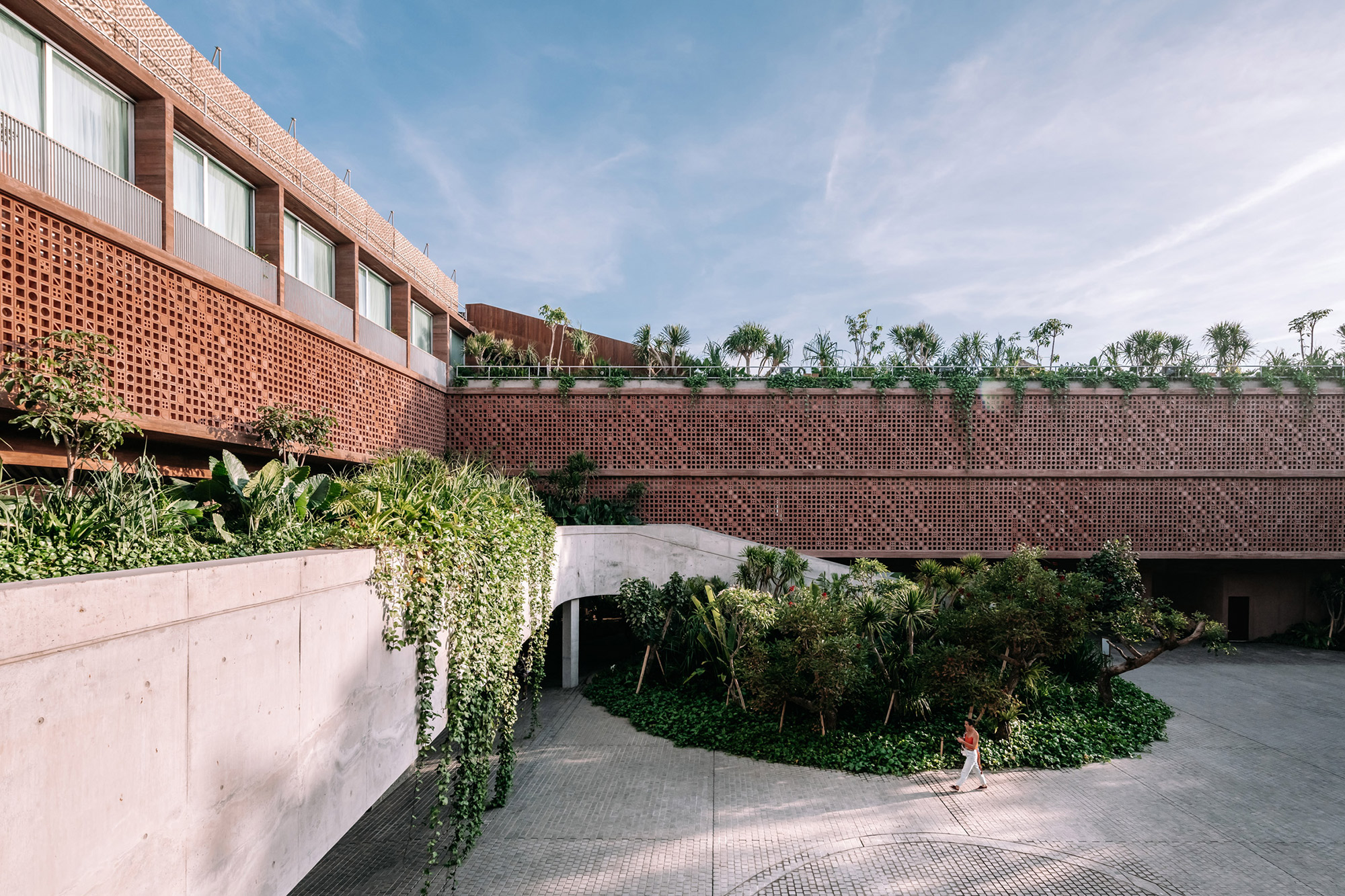
Desa Potato Head in Bali
Yes, there’s a hotel with that name. And no, they’re not insane. At least we don’t think so. For one, their eco-initiatives are great.
Where to start? All the furniture is pretty much made with recycled materials. All the essentials, such as sunscreen and shampoo are all-natural and provided as refills, not new bottles. You get a zero waste kit with a water bottle, bamboo cutlery, straw, etc. as well. Impressive, is it not? And the Potato Head sustainable travel experience doesn’t stop at eco-friendliness—they offer music fueled parties on the beach and other such creative adventures. They have hotels in Singapore and Hong Kong as well.
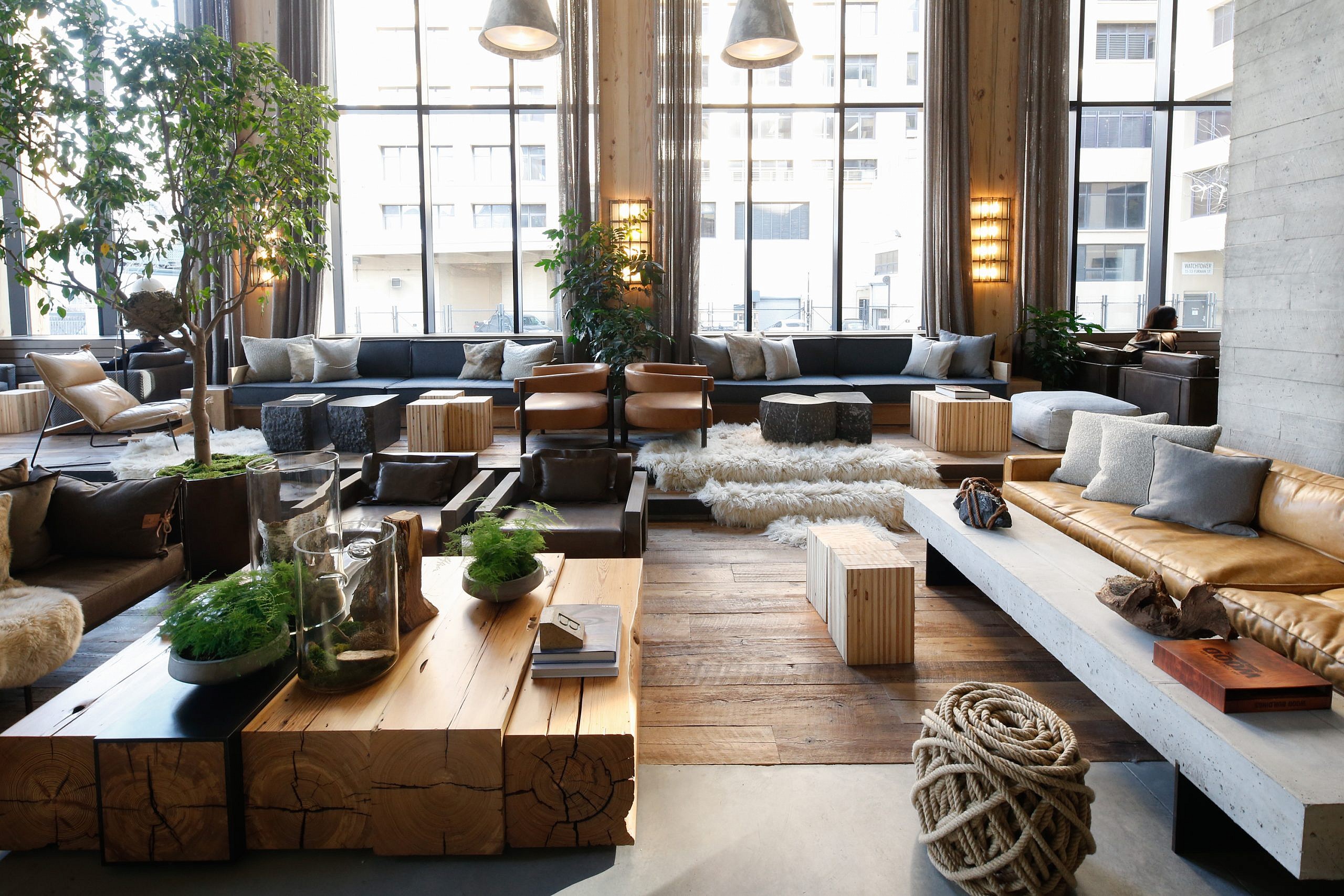
1 Hotels
“I wanted to capture the beauty of nature in a hotel and commit to safeguarding it as best I can, a responsibility that I believe we all share. It’s 1 world. But 1 is more than a hotel – it’s a philosophy and a platform for change.” – Barry Sternlicht – CEO & Chairman, 1 Hotels. It’s a pretty bold statement on sustainable travel, but 1 Hotels deliver on it.
Firstly, they save on water and electricity whenever possible (they even have a shower timer to remind you when it’s time to get out). Secondly, they use natural materials when doing any kind of building. They also put in place air and water filtration systems, so that the humans occupying their hotels breathe and drink cleanly. Thirdly, they use refillable bottles for all body care products and have a “save on the plastic” scheme implemented in all their hotels. They have other nice features too, such as farm fresh fruit you can buy in the lobby, lots of plants everywhere and instead of you making notes in a notepad and wasting paper, they have chalkboards in every room (made with reclaimed wood). Oh and their privacy signs for the doors are, in actual fact, rocks engraved with messages. Clever, we say. And perfect for our sustainable travel guide.
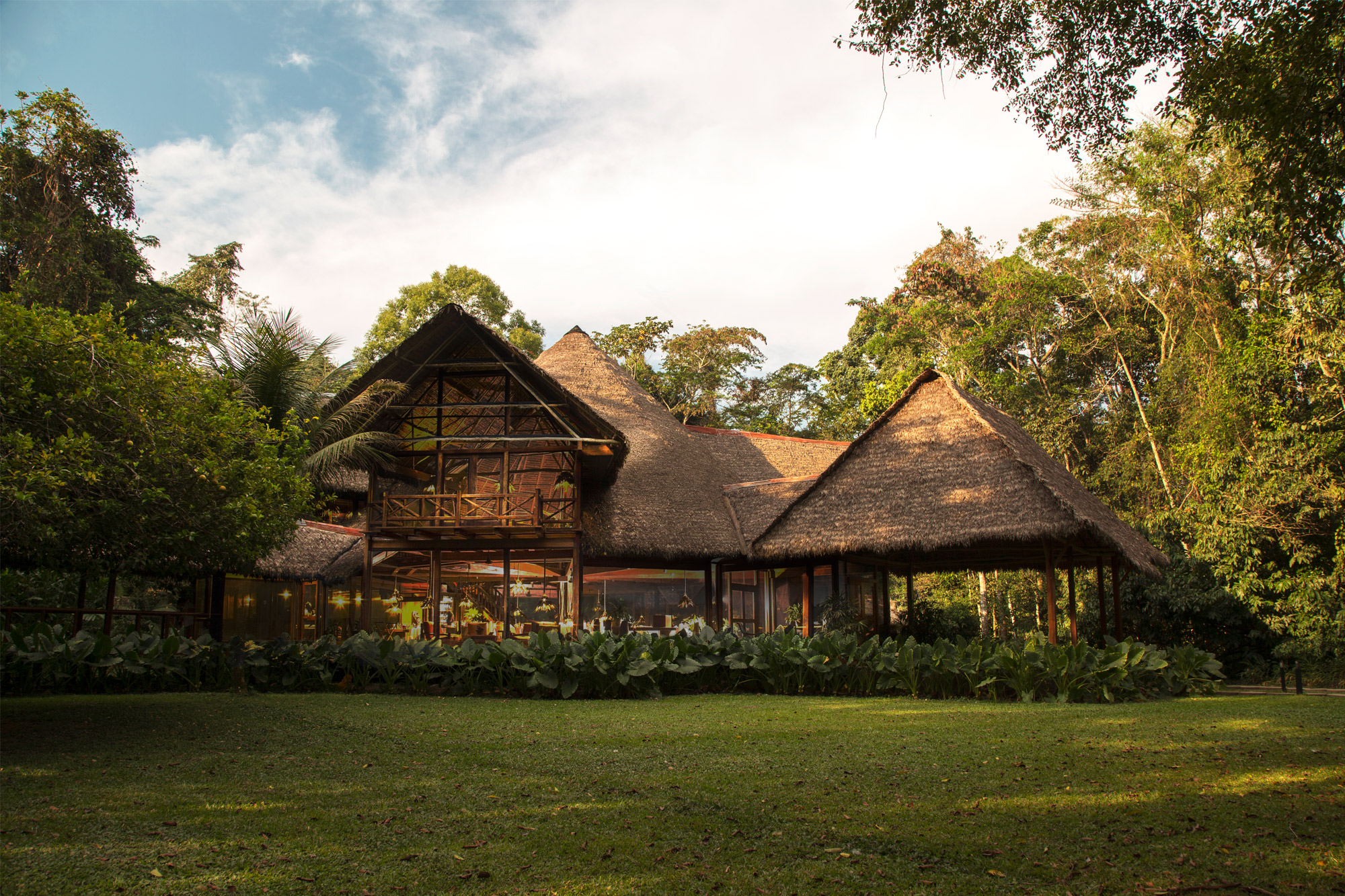
Inkaterra
A hotel chain based in Peru, Inkaterra aims to conserve the environment, preserve the native cultures and develop sustainable travel practices in Peru. They use only native materials for their hotels and even perform scientific research—defining natural areas where their hotels are established. They have their own charity focused on initiatives for biodiversity and conservation. Not to mention: they became carbon neutral in 1989. That’s back when most people had no idea of the sustainable travel whatsoever. If heading to Peru, whether staying in the city, or the jungle, Inkaterra is a good option for eco-warriors.
Jade Mountain
This is a sustainable travel resort based in the midst of the wonders of the natural world in Saint Lucia. They decided to do their part in preserving the environment pretty much from get-go and chose to become independent of local water supplies. Meaning they created their own water supply by restoring an old reservoir to capture rain and river water. They also use grey water for irrigation, have no chlorine in their pool water and have installed low flow showers and low flush toilets.
When it comes to lighting, they use natural lighting during the day and yellow lighting at night so as to help minimize air pollution which disturbs animals (and humans!). There are only 12 air-conditioning units at the resort—the rest of there resort makes use of natural air flow to keep things cool. They also buy their food locally where possible and reduce, reuse and recycle. They even take old/damaged but salvageable towels and have local seamstresses turn them into small hand towels for public areas.
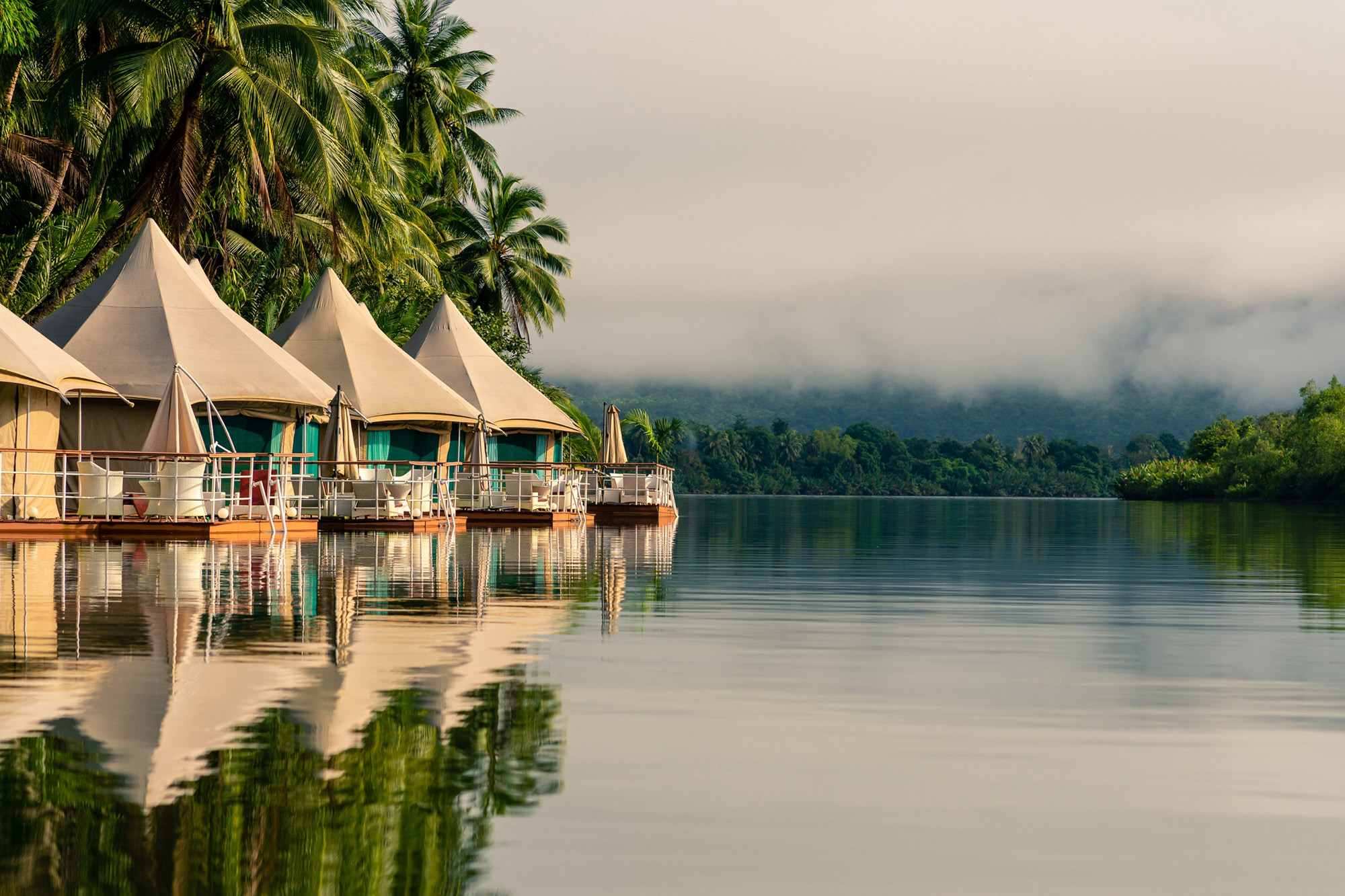
4 Rivers Floating Lodge
One of the hotels recommended by Green Pearls is 4 Rivers Floating Lodge, based in Cambodia. They offer “top-of-the-line luxury in harmony with Mother Nature.” And their floating tents certainly are surrounded by spectacular nature—the eco-region of the Cardamom Mountains and rainforest.
They actively work with the Wildlife Alliance and partake in cleaning up the Tatai River and waterfalls yearly, also providing funds to the projects by donating from their income from tourists. In addition to this, they help by improving surrounding schools. Designed as sustainably as possible, the hotel uses wood and recycled plastic, as well as solar panels. The furniture was partly made from the local water hyacinth plant. The water for showers, taps and toilets comes from their own wells, as well as from rainwater. They also have their own sewage system and encourage guests to use only the natural toiletries provided, so as not to slow the water cleaning process. Lastly, they have several schemes in place to minimize waste on the property and during their excursions. In short, 4 Rivers Floating Lodge is not only a sustainable travel gem, but a natural paradise. Literally.
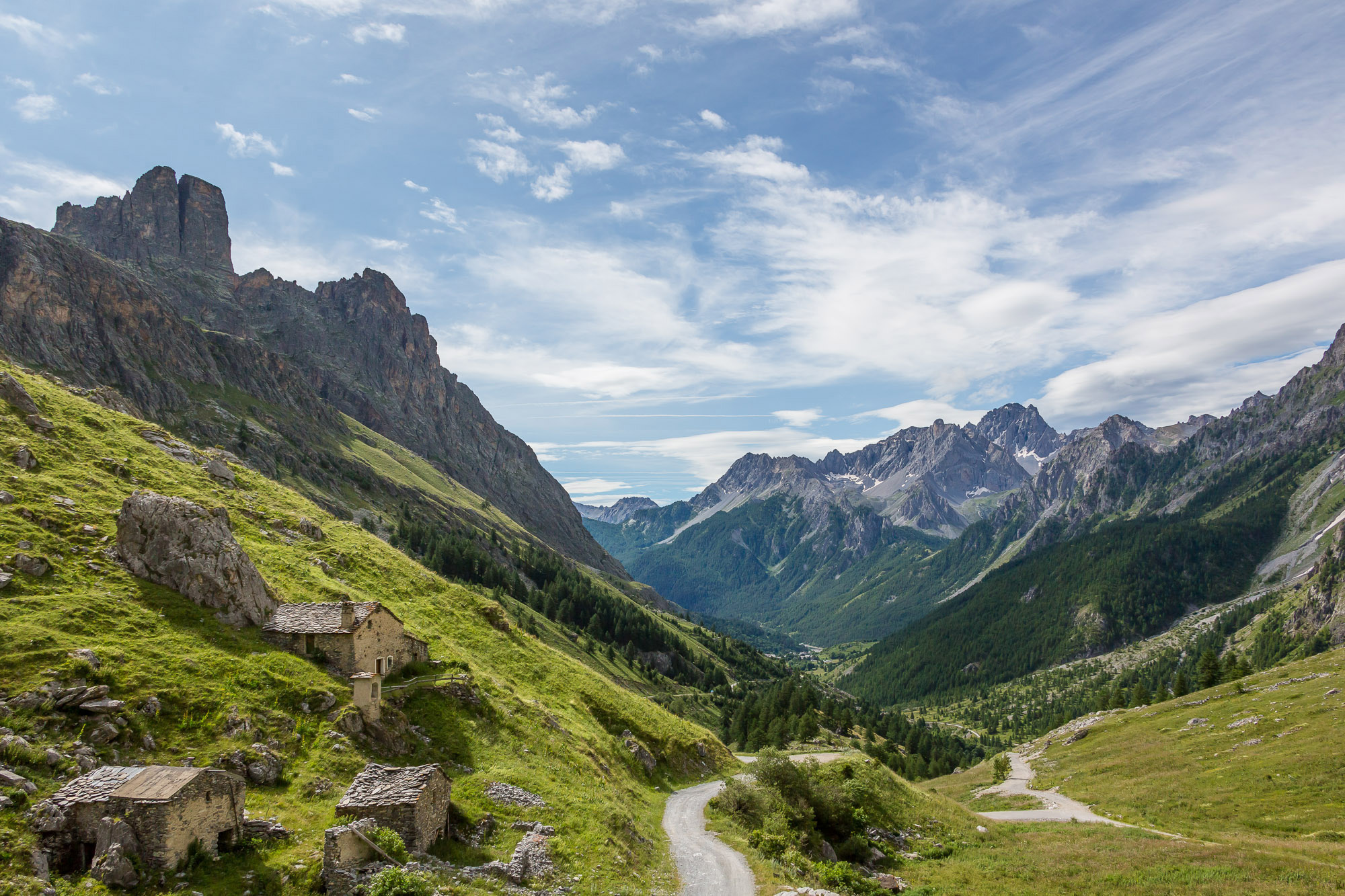
Locanda Mistral
Another hotel recommended by Green Pearls for sustainable travel—this time a small family run hotel—is Locanda Mistral in Northern Italy. The mistral is the strong wind that blows in winter in Southern France, but in this case happens to refer to Mistral Frédéric Joseph Etienne who wrote poetry and operettas in the region. At Locanda Mistral you will find two charming old-style Occitan lodges that have been modernized using local materials. Situated in the Maira Valley, you can explore the surrounding mountains by hiking, skiing, or mountain biking, depending on season and preferences. The air quality up in the mountains is naturally clean, and the restaurant offers clean eating too, with local organic vegetables and local supplies in general for all their dishes.
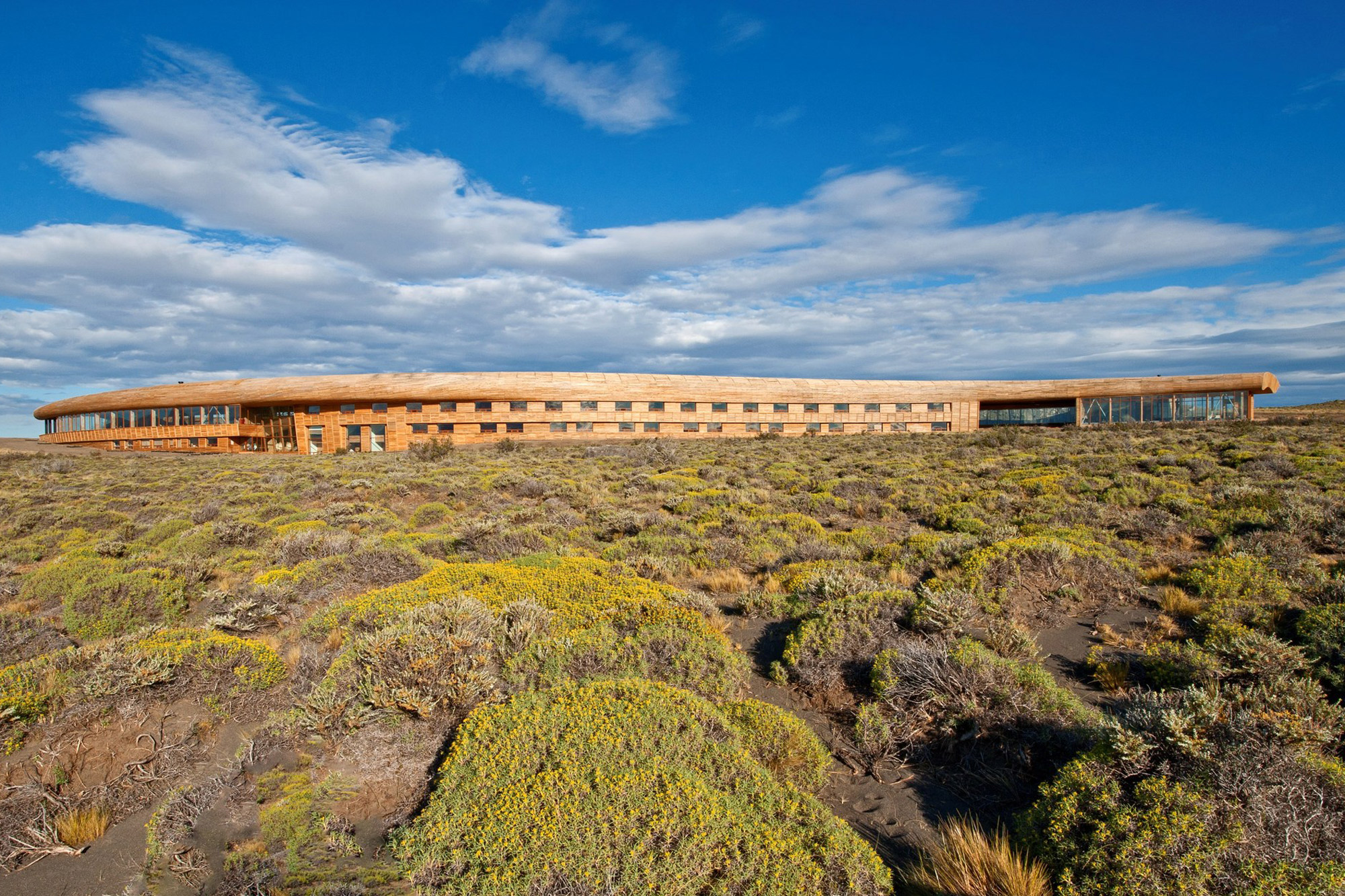
Tierra, Patagonia
If you’re looking for an eco-friendly stay in Torres del Paine National Park, then Tierra is a good option. Situated next to the mountains and Lake Sarmiento you are, quite literally, in the middle of nowhere. Coined as an “adventure spa hotel” we can’t but be a little bit curious about this hotel! As for the sustainable travel side of things, they use LED lighting, control their thermal efficiency, and participate in a reforestation project that aims to plant one million trees across the Chilean Patagonia’s national parks.
While building Tierra Patagonia, they preserved the flora and fauna they had to remove to build the hotel and then replanted it around the hotel. There’s also a path leading to the lake, so that guests don’t trample vegetation when heading down there. Excursions are tailored so that guests learn about the local culture while also supporting the locals. In the works are renewable energy projects and a kitchen-garden. Tierra owns two other properties in Chile, if you aren’t keen on heading to Patagonia.
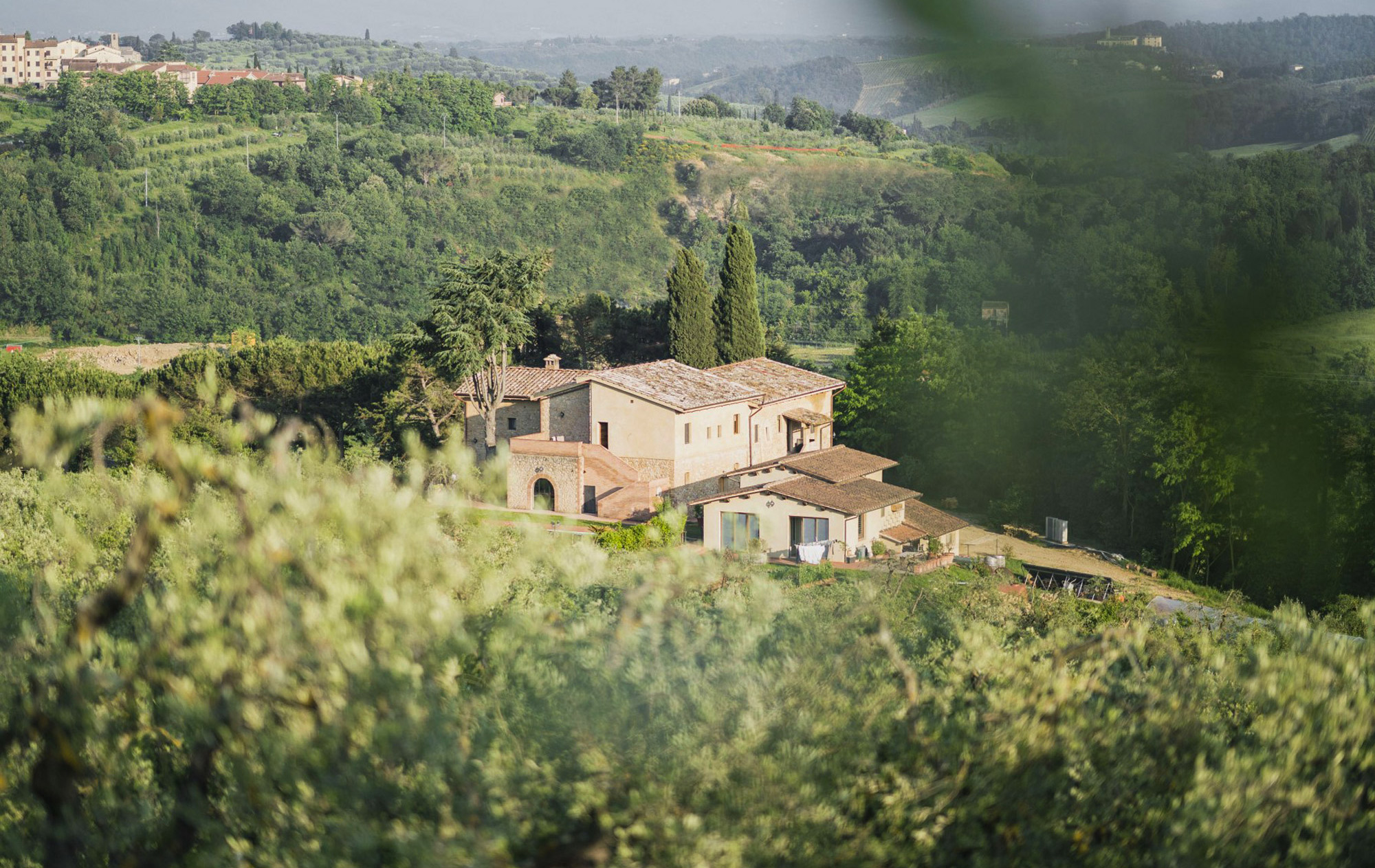
i Pini
This is another Green Pearl—this time a vegan vineyard. It offers a 100% vegan, organic kitchen and—of course—winery, a saltwater pool and permaculture workshops. They also provide meditation retreats, hikes to explore local herbs and cooking classes. The vineyard is located in Tuscany in the medieval town of San Gimignano—a UNESCO world cultural heritage site. Once the home of a castle (of which very little remains), the hotel has been refurbished using all natural materials. All furniture is also made with natural materials and are often antique finds. Everything is handmade in Tuscany.

Flying
There is no way around it: flying means your carbon footprint skyrockets. So if you’re going overland, consider taking the train, or a bus. KLM even suggests you avoid flying if possible. And they’re an airline. Consider this: one flight from Amsterdam to New York equals 866 10-minute showers, or 18% of the yearly energy spend of an average Dutch household according to FlyGRN. That’s to say: your carbon emission from one flight is the same as the carbon emission from the yearly energy spend of an entire household.
That’s not to say you shouldn’t fly, but maybe adopt some sustainable travel tips. Consider vacationing nearby when possible and enjoyable (it’s almost frightening to realize how little time we sometimes spend exploring the place we live in), but don’t stop flying altogether. Not only would a ton of businesses suffer because of this, but also, there are ways and means of making travel more sustainable. Make your own travel arrangements as sustainable as possible and put pressure on airlines to follow suit. Some are already taking action.
For example, Air New Zealand has developed an edible coffee cup. Doesn’t sound like much? They serve 8M cups of coffee per year. Suddenly, it becomes clear that a cup can make a difference. Air New Zealand is committed to remove 55M single-use plastic items this year and Qantas are doing their bit: normally they generate over 33,000 tons of waste per year, but by 2021 they want to reduce it by 75%, or ca. 100 million plastic items. JetBlue is taking it one step further and aims to become carbon neutral this year (2020).
KLM, on the other hand, uses biofuel on some of their routes. As does SAS. However, biofuel is only available in airports in Bergen, Norway; Brisbane, Australia; Los Angeles, USA; Oslo, Norway; and Stockholm, Sweden. It also costs four times as much as regular fuel but it is believed it can cut the carbon footprint with up to 80%. That’s pretty dramatic. And we all like a bit of drama, don’t we?! Also, consider which type of plane you’re flying with. Newer models usually use less fuel. For example, the Airbus A320neo comes with a 16% lower fuel burn.
And if you use FlyGRN to book a flight, they offset the carbon emission for you. Sure, some airlines have carbon offsetting practices in place, but as it turns out, some of those practices have been fraudulent. Not because the airlines did anything wrong, but because they teamed up with the wrong organizations. These days, airlines have started to get smarter about their choices though. Lastly, if you have the time, bringing a reusable container filled with snacks that aren’t individually wrapped saves you from buying snacks and wasting resources during your flight.
Travel Accessories
Your carbon footprint when traveling isn’t just about which airline or hotel/resort you choose, but also about what clothes you wear, what you pack those clothes in (a.k.a. your favorite friend the suitcase) and what you do once you get to your destination.
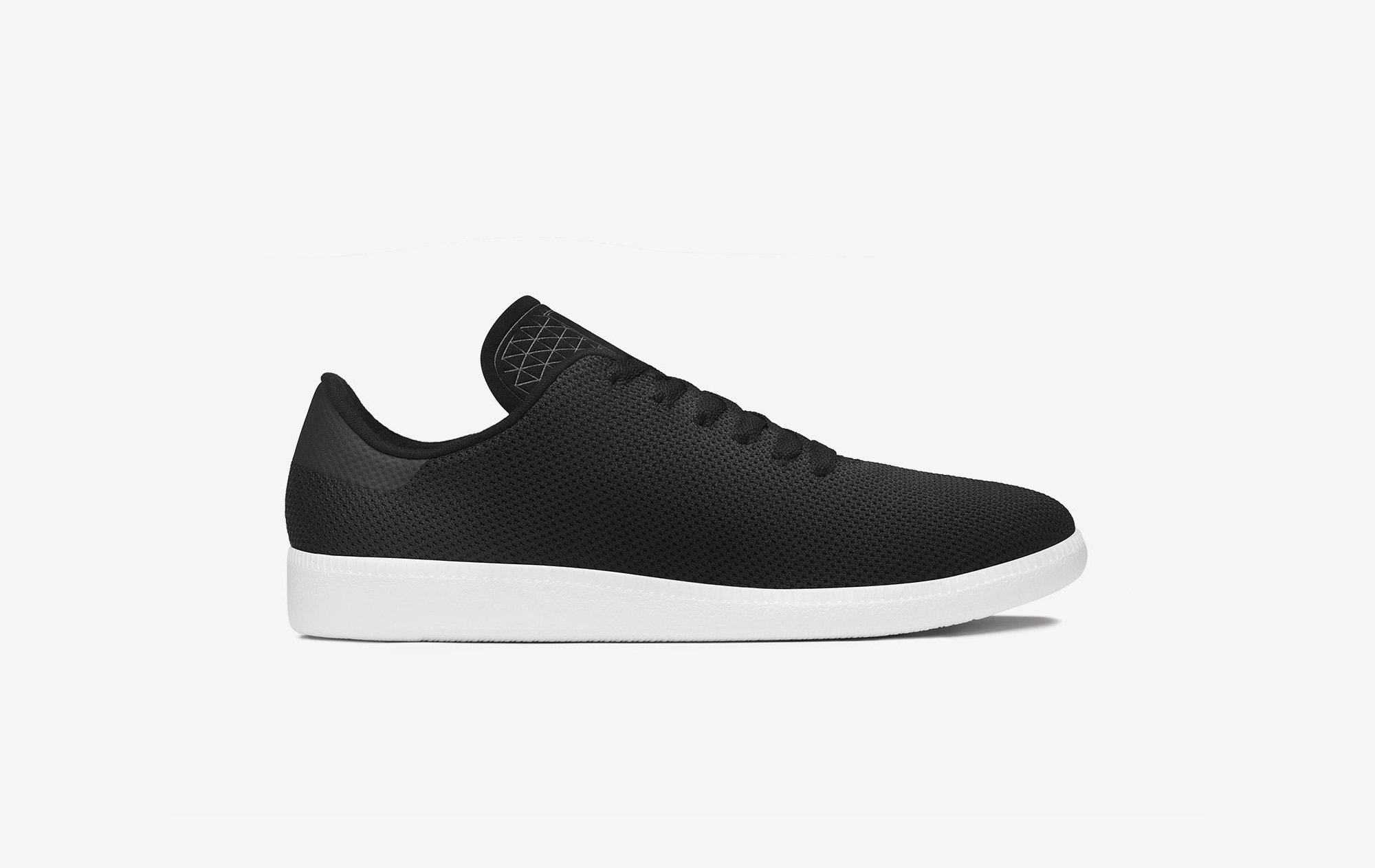
For Your Feet—Oliver Cabell
Oliver Cabell makes handmade footwear using recycled plastic, because, according to their homepage, we manufacture 300 million tons of plastic every year, of which only 9% is recycled. By selling directly to the consumer, they also avoid huge markups that many shoe manufacturers have. If you look at the footwear Oliver Cabell sell, you also realize that they’ve got style. Meaning you can look good and feel good at the same time.

The Bottle—Memobottle
You don’t want to buy small bottles of water over and over again during your trip – especially if you’re passionate about sustainable travel (according to Memobottle, we consume 75 billion gallons of bottled water every year). If staying at a sustainable hotel, they’ll likely provide you with fresh drinking water on site. But how do you carry it around? In a memobottle. At least if you always fancied yourself one of those old (Western) guys who carried a bottle in their pocket. Of course if you think your colleagues are going to suspect you of having Vodka stashed away in inside your suit jacket, maybe you should consider another kind of bottle…
Already very reasonably priced, for every bottle sold the company also donates two months supply of water to a person in need through water.org.
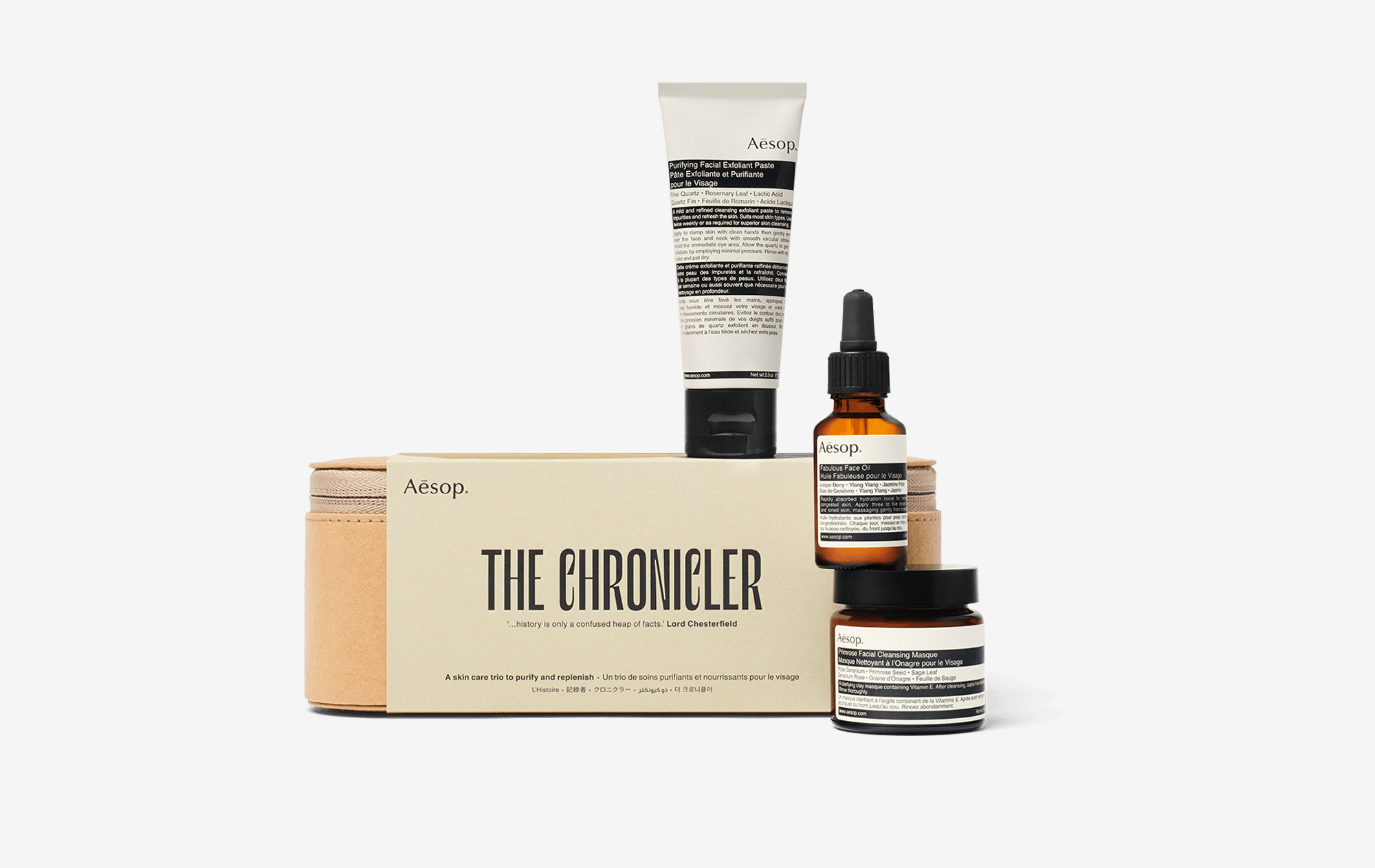
Sustainable Travel with Travel-Sized Toiletries—Aesop
If you absolutely need to bring travel-size toiletries, then choose to go with a company that uses mostly natural ingredients and have a sustainable packaging approach. One such company is Aesop. Among other things they use recycled PET for their bottles. They also avoid chemicals that act as pollutants and they use mainly natural products in their formulas, though they do believe in science and use certain ingredients that are not completely natural, but still biodegradable.
Point being: if you are looking for toiletries to pack in your bag that you can use during transit and that offer a better alternative than those that will be given in-flight, then Aesop is a great choice. If you’re packing toiletries in general, Aesop is also a great choice. Particularly if you are traveling to a hotel that isn’t on the sustainable spectrum and want to avoid using their tiny bottles of not-so-eco-friendly toiletries (isn’t it funny how something that used to be seen as the ultimate luxury is now something that makes you feel bad?).
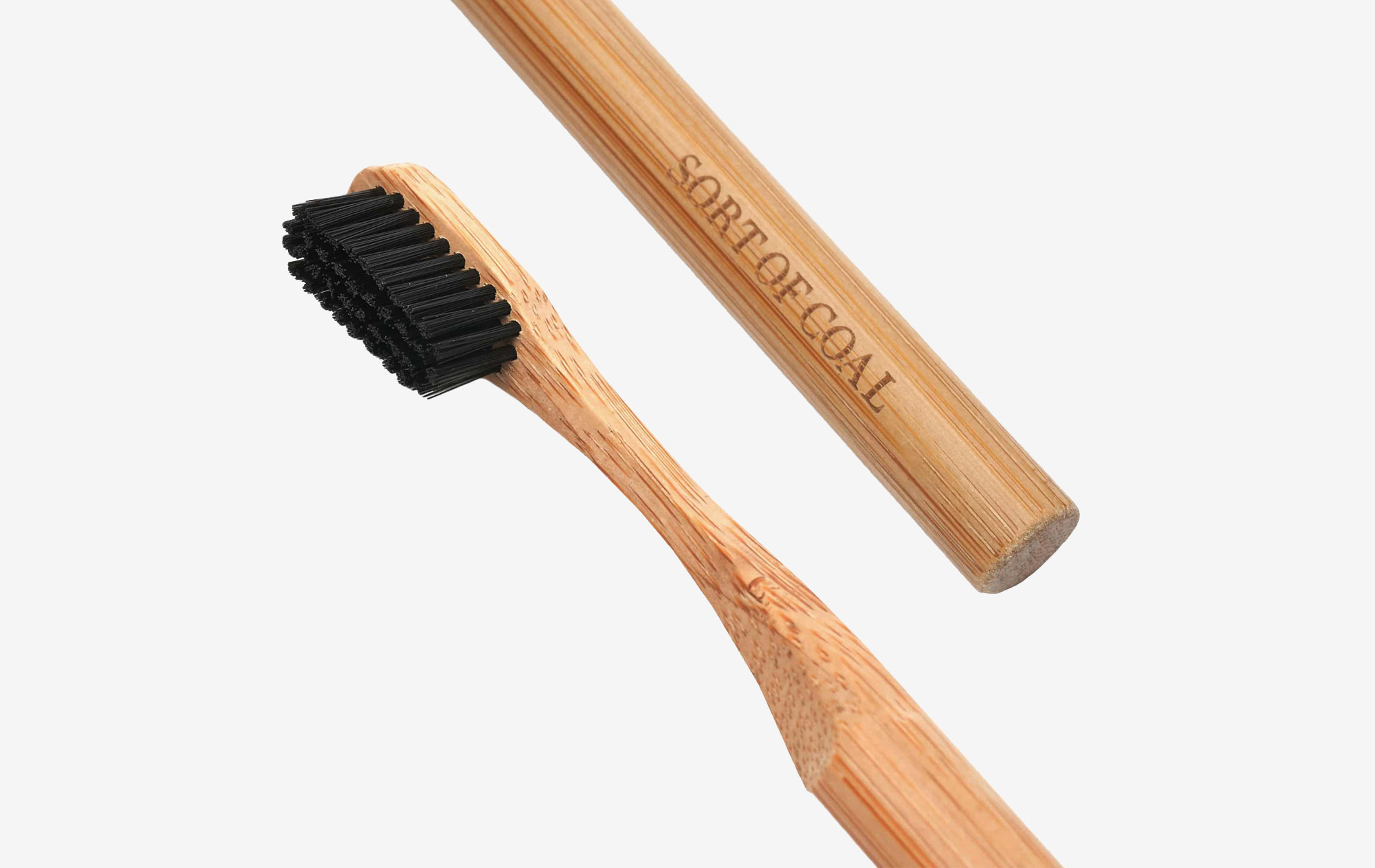
The Toothbrush—Sort Of Coal
Bamboo toothbrush with charcoal bristle. Sounds kinda fancy. Also a bit contrary—when was the last time you put charcoal on your teeth? When pranking someone on Halloween? Actually, in this instance the charcoal bristle is made from oak branches turned into a form of eco-friendly activated charcoal known as Binchotan. Once you’ve used your toothbrush bristle, you can mix it with soil for a natural fertilizer. Needless to say, you can toss your bamboo toothbrush in a compost heap or into your fireplace one you’ve stopped using it!
The whole process of making Binchotan has been made as eco-friendly as possible and the by-product of the process is a pure vinegar. The Binchotan itself can be used to clean water and air! All great reasons to include it in our sustainable travel guide.
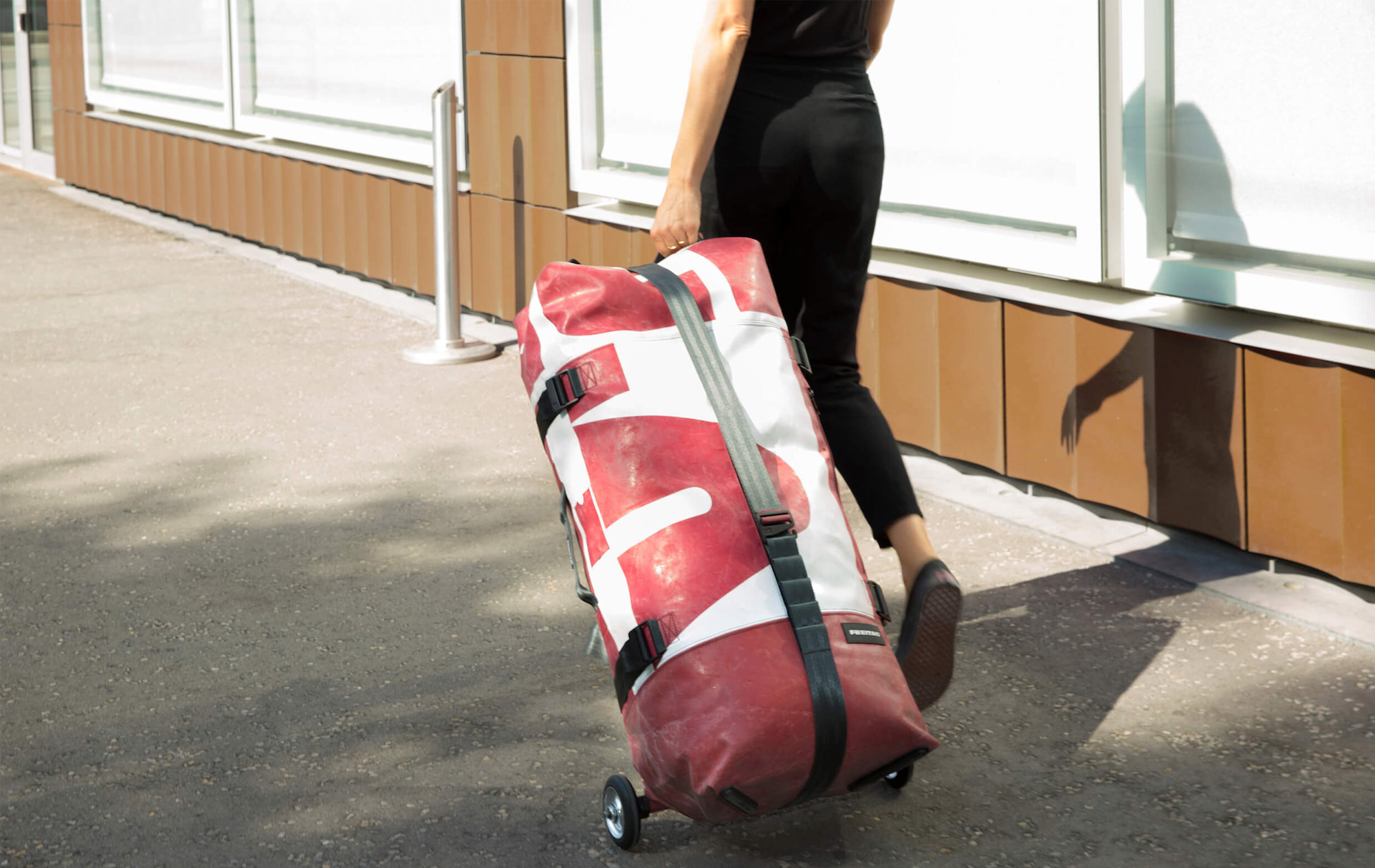
The Suitcase—By Freitag
Freitag has been making eco-friendly bags for nearly three decades, using recycled materials. Their latest addition is a bag for sustainable travel (a.k.a. a suitcase, though it doesn’t technically look like one)— Zippelin—which uses an inflatable bicycle tube instead of a heavy metal frame. Meaning you inflate your bag before you go. The bag weighs around 3.6 kilos and can hold up to 85 liters.
Ships
Traveling by boat sounds like a better option than traveling by plane, but if you intend to go on a cruise you should consider that a lot of cruise ships have received fines for dumping waste (bear in mind that the average ship generates 80,000 liters of sewage PER DAY) and uses bad, bad fuel. On the upside, eco-warriors around the globe have taken up the challenge and started producing eco-friendly cruise options. Maybe the world will once again see us sailing across the pond from Britain to America when going back and forth to Europe?
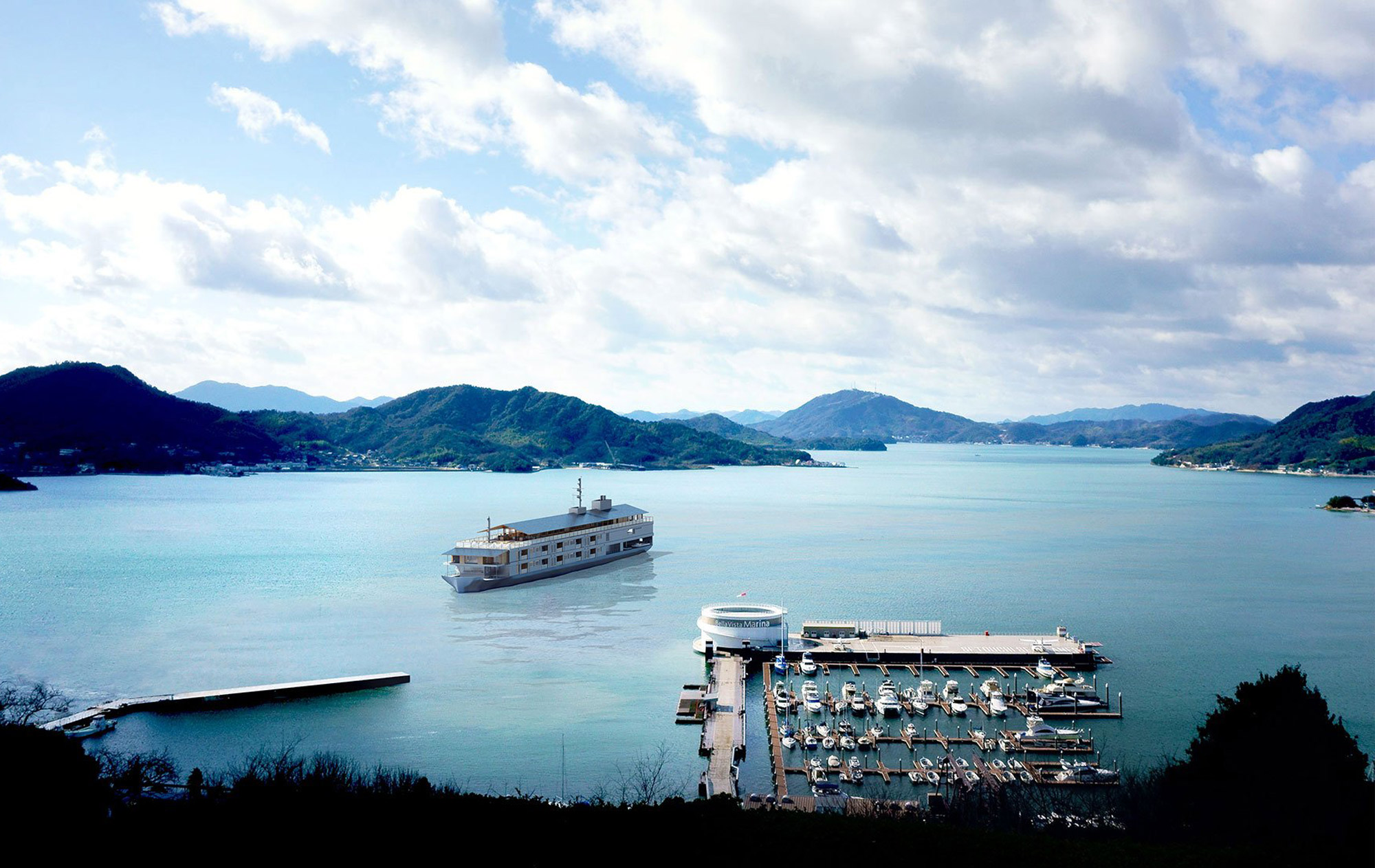
guntu—A Floating Hotel
guntu is a floating hotel, not a boat. At least according to the literature. But we’d still like to propose that it is, in fact, a boat, floating on the Seto Inland Sea (that’s in Japan). Designed by Yasushi Horibe, the boat features interiors almost entirely made from wood. If you’re looking for a Zen cruise, this is pretty much as close to your goal as you’ll get.
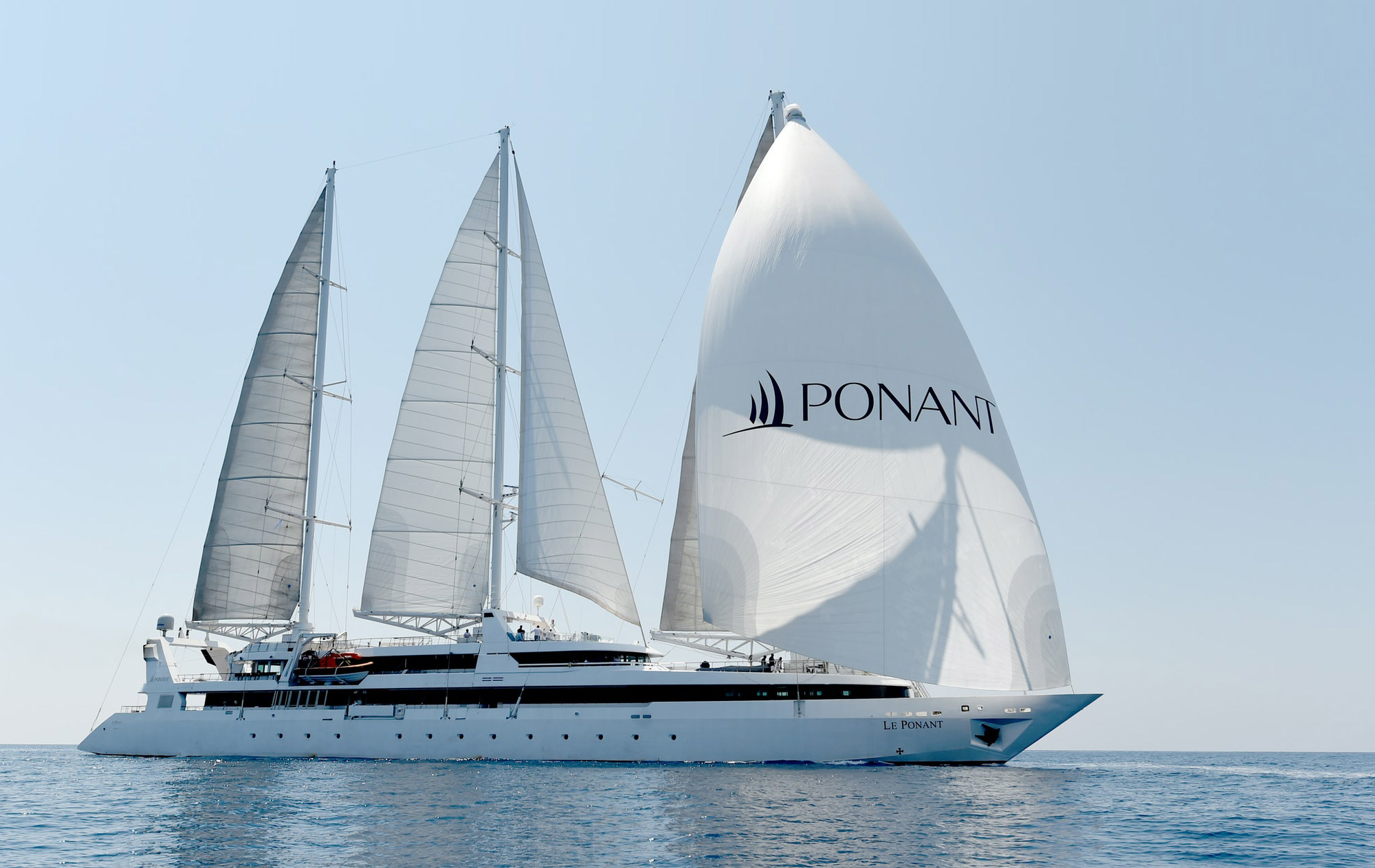
Le Ponant—By Mundy Cruising
This is not a cruise ship, but a three-masted yacht, carrying “only” 64 guests and 32 crew. If you know anything about sailing, you know that’s an awful lot of people and therefore, a very big yacht. However, compared to a cruise ship it’s a very small amount of people. As this boat sails, it’s naturally more eco-friendly than a regular cruise ship. And if you’re looking for traditional French luxury but sustainable travel, then this is a brilliant option.
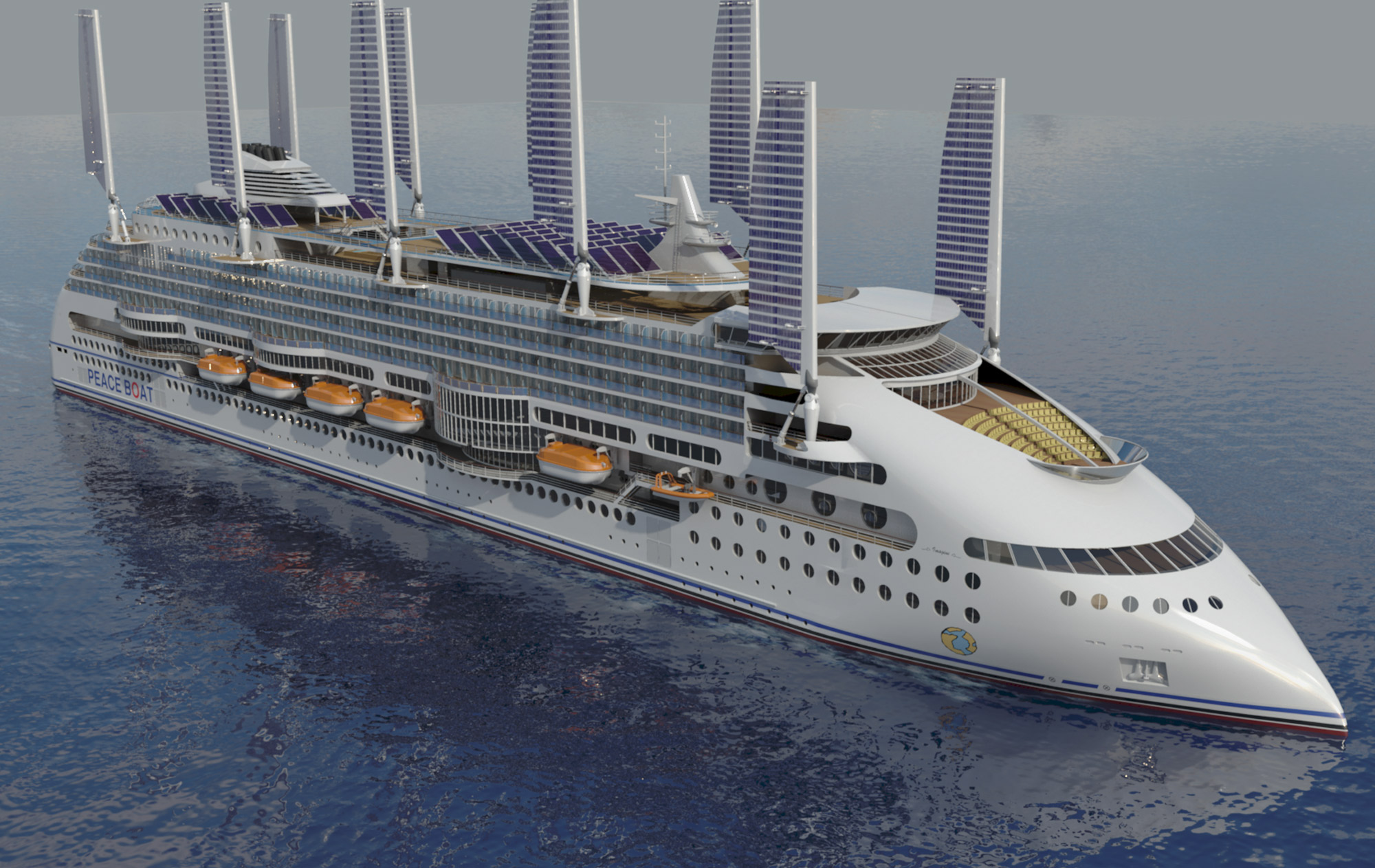
Eco Ship—By Peace Boat
The mock-ups for this ship (which will set sail some time in 2020) looks like something out of a sci-fi novel, complete with retractable solar sails and wind generators. It also has a closed loop water system and a whale-inspired hydrodynamic hull. The epitome of sustainable travel, it’s aiming for as close to zero waste as possible, even though it can take up to 2,000 passengers at once.
It will have a vertical garden that provides vegetables for its guests, as well as a sort of garden that absorbs surplus water and uses composted food waste as soil. Its hybrid engine can obtain power from liquefied natural gas and diesel, as well as from the power the solar panels, wind generators and kinetic floors generate. Peace Boat offers educational journeys on all their ships and Eco Ship will also host a lab. If you want to go all the way out with eco-friendliness, you should look up this ship. You’ll be impressed.
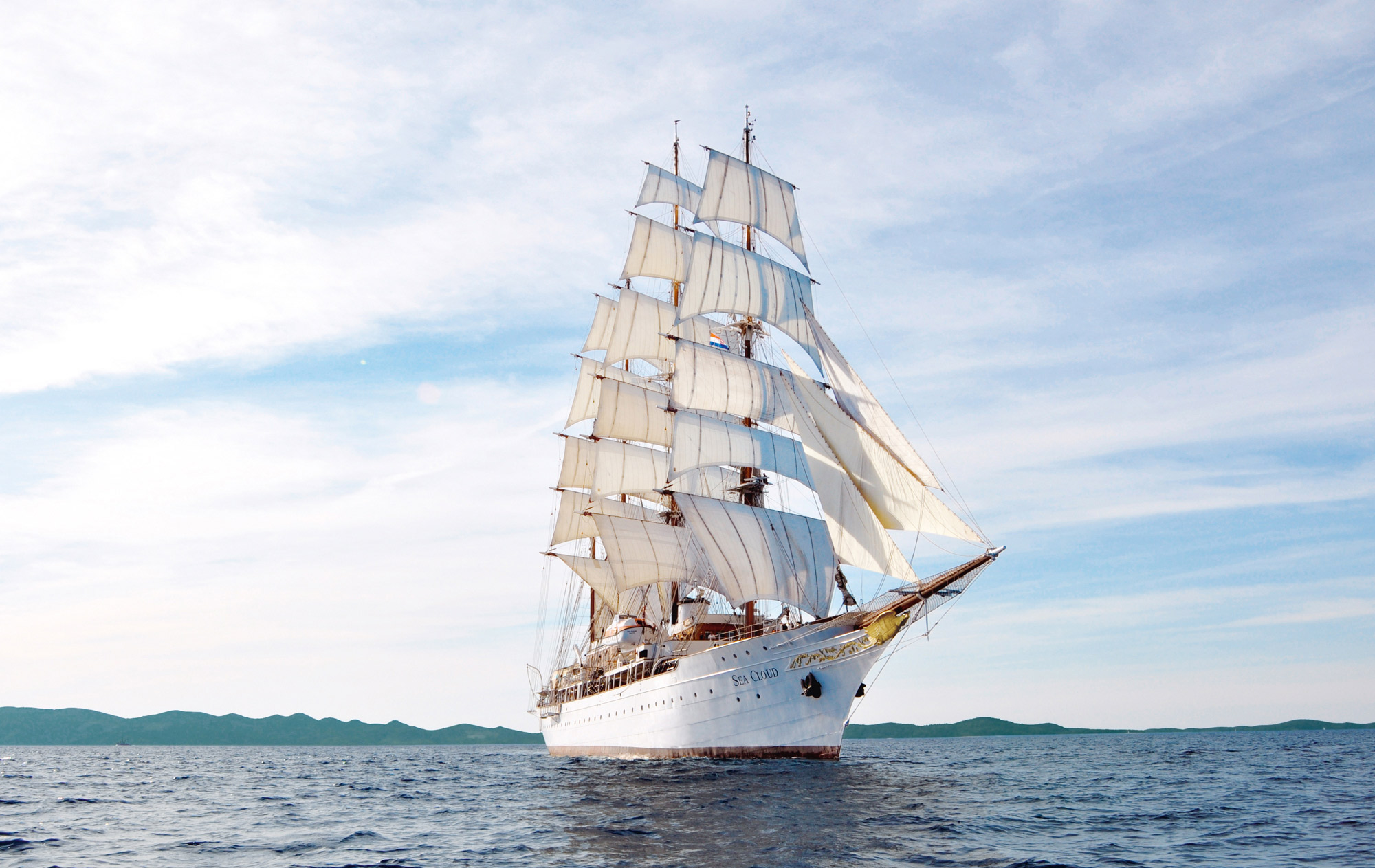
Sea Cloud
You wanted some sustainable travel ideas, so we’ve got something special for you. Sea Cloud is a windjammer, meaning it’s a ship in the true sense of the world. If you ever wanted to experience what it was like sailing the seven seas in the 1800s, this is your chance. Restored to look like the real deal, the ship even features restored fireplaces (yes, fireplaces onboard a ship!). You will find the ship’s routes online, but you can also charter it for a wedding, or other occasion. It takes up to 64 guests. While Sea Cloud hasn’t set out to be sustainable, traveling by wind is much more sustainable than most ways of traveling!



